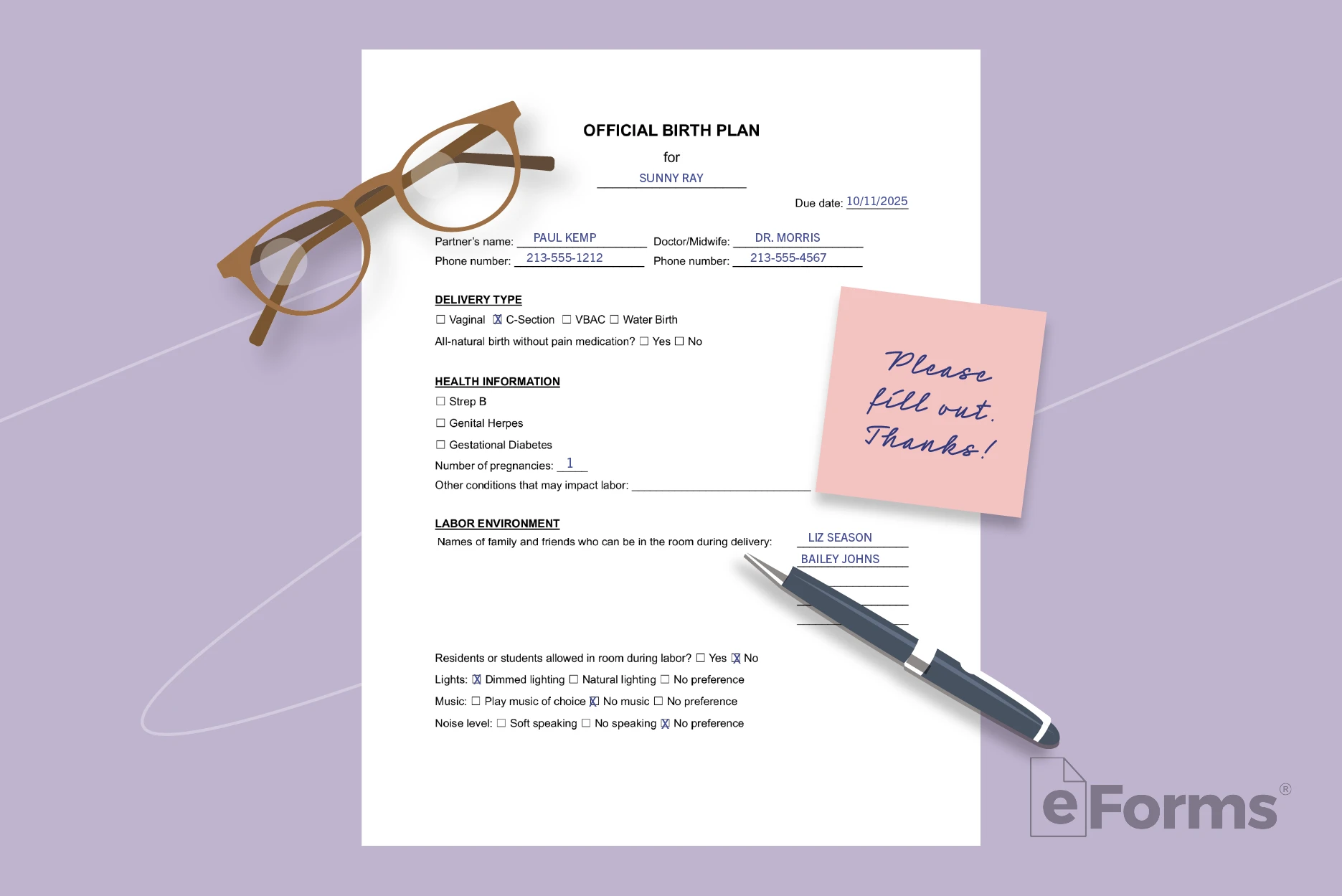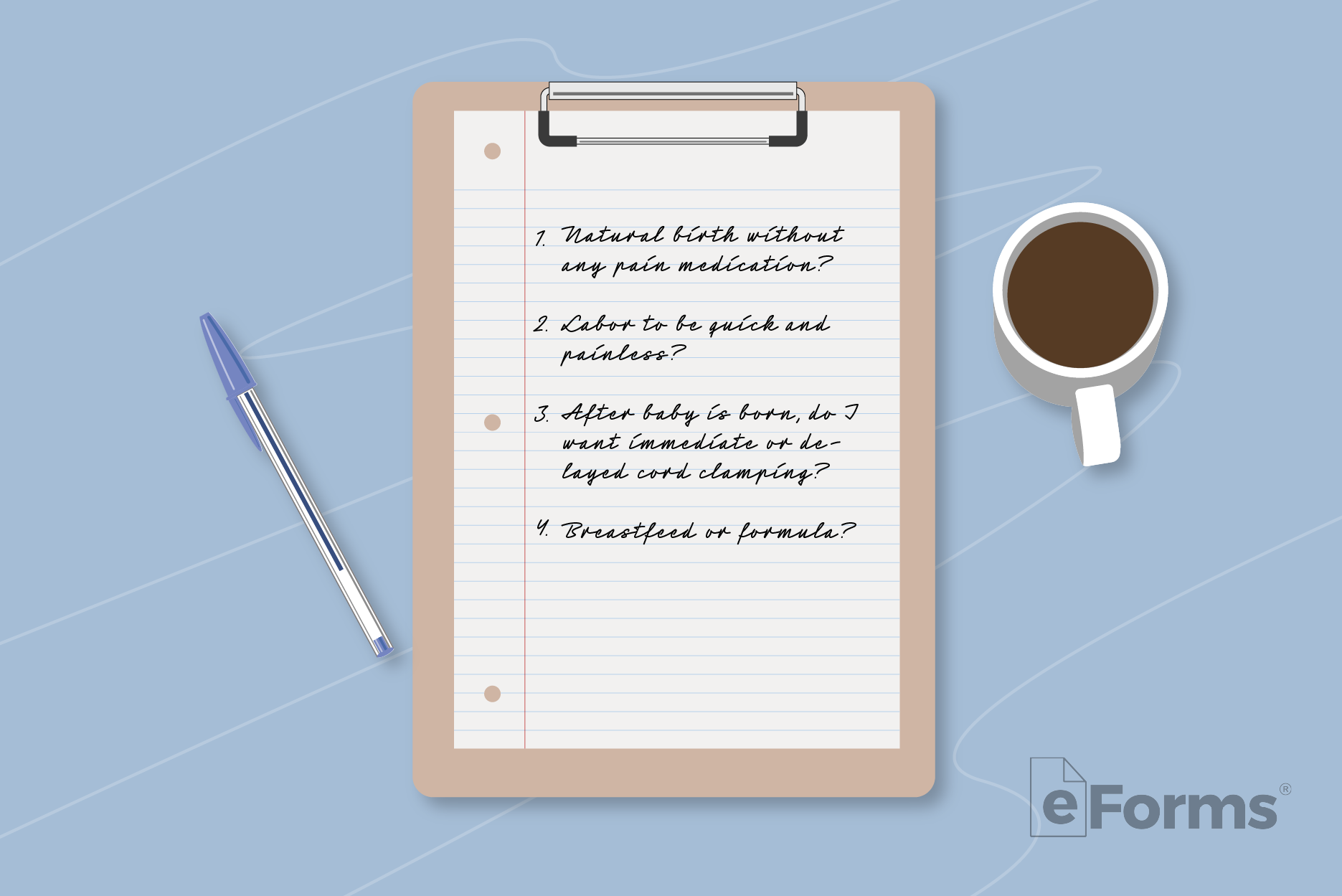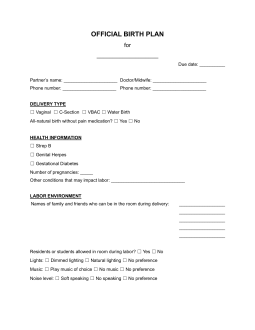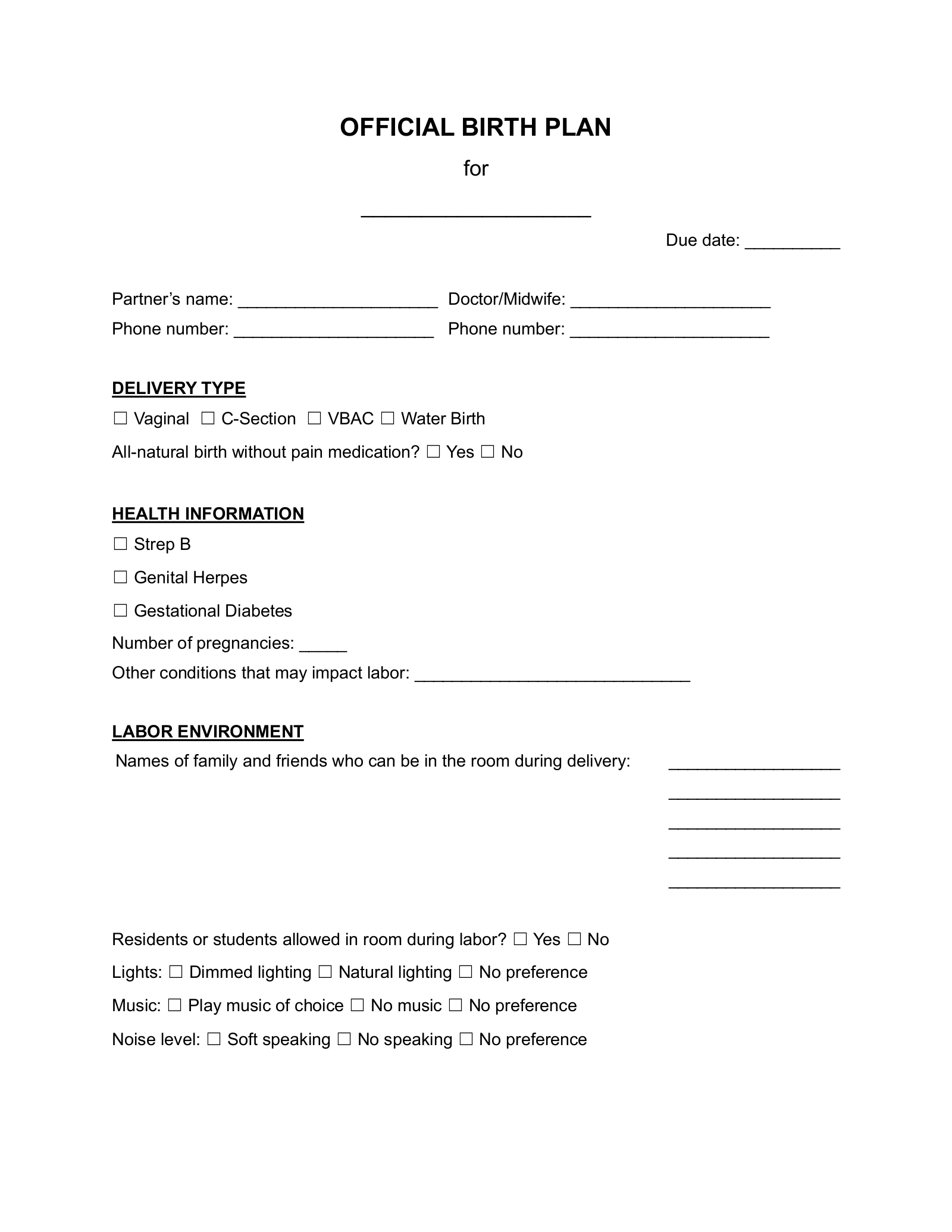Updated April 22, 2024
A birth plan is a written document that outlines one’s preferences during labor, delivery, and after childbirth. It can include the person’s wishes regarding birthing procedures and positions, pain medication, post-natal care, and more. The document should be shared with one’s healthcare provider and birth team before the delivery date.
Table of Contents |
What is a Birth Plan?
A birth plan is an outline of one’s birthing plan and preferences related to labor and delivery. While it is not a required document, it can be extremely helpful to prepare a summary of all your important personal details and preferences for the birth team to use as a guideline while you’re in active labor.
Note: It’s also crucial to remember what a birth plan is not — a directive set in stone. While most healthcare providers will do their best to follow the preferences listed on the birth plan, the health and safety of the mother and baby will always be prioritized in the face of unforeseen complications or circumstances.
What to Include in a Birth Plan
A birth plan can include both medical and non-medical preferences concerning your childbirth.
Non-medical details outlined in a birth plan can range from your preferences on the environment (i.e. dim lights, music, whispers, etc.) to who is allowed in the delivery room.
For medical preferences, the following details are commonly included in a birth plan:
- Any pre-existing medical conditions and drug allergies (i.e. anemia, heart disease, infections)[1]
- Desired type of birth (i.e. vaginal, assisted vaginal, C-section, or VBAC)[2]
- Methods of pain management (i.e. epidural, homeopathic, or other alternatives)
- Post-birth procedures (i.e. clamping, feeding, circumcision, etc.)
- Preferred procedures in unexpected situations (i.e. use of forceps, vacuum, emergency C-section)[3]
How to Create a Birth Plan (4 steps)
- Research and Consider All Your Options
- Fill Out a Birth Plan Template
- Share With Your Doctor and Birth Team
- Make Changes as Necessary
1. Research and Consider All Your Options

Before creating a birth plan, it’s crucial to identify what’s important to you. Labor preferences can vary widely from person to person.
Here are some examples of questions to consider:
- Do you want a natural birth without any pain medication? Or do you want the labor to be quick and painless?
- After the baby is born, do you want immediate or delayed cord clamping?
- Breastfeed or formula?
Be sure to do your research about each of these options and their pros and cons. This is especially important if you have any pre-existing conditions that may cause complications during labor.
It’s recommended that you consult your healthcare provider about the safest and most optimal options to ensure your and your baby’s health and safety.
2. Fill Out a Birth Plan Template

Once you have considered all your options, fill out the birth plan template to reflect your desires and preferences. Be precise and direct in your language, as your birth plan will be used as the go-to reference by your medical provider while you’re in active labor.
Print out several copies for your own records and for your doctor, birth team, and anyone else involved in the process.
3. Share With Your Doctor and Birth Team

At least several weeks before your delivery date, share and discuss your birth plan with your doctor and birth team. This will help manage expectations and ensure everyone is on the same page. Your doctor may also provide suggestions or ask for clarification on some of your points.
4. Make Changes as Necessary

It’s important to keep in mind that while you can prepare to the best of your ability and hope for an ideal labor, childbirth can be a long and arduous medical procedure that requires responding quickly to unforeseen circumstances.
Remember that your birth plan will act as a set of guidelines, but the doctor will have the final say to ensure the health and safety of you and your baby.


